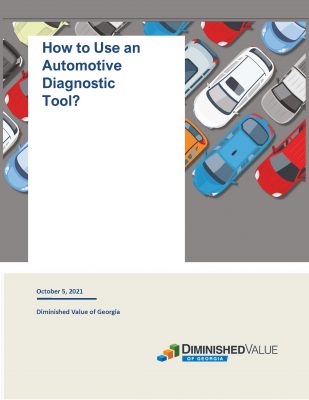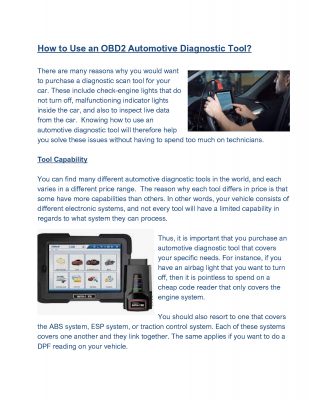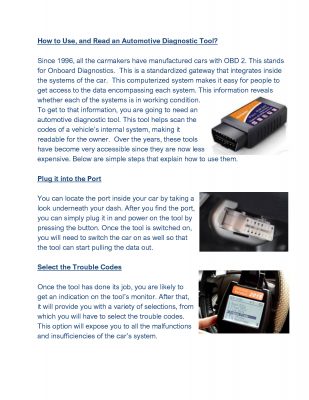How to Use an OBD2 Automotive Diagnostic Tool
There are many reasons why you would want to purchase a diagnostic scan tool for your car. These include check-engine lights that do not turn off, malfunctioning indicator lights inside the car, and also to inspect live data from the car. Knowing how to use an automotive diagnostic tool will therefore help you solve these issues without having to spend too much on technicians.
- Tool Capability
You can find many different automotive diagnostic tools in the world, and each varies in a different price range. The reason why each tool differs in price is that some have more capabilities than others. In other words, your vehicle consists of different electronic systems, and not every tool will have a limited capability in regards to what system they can process. Thus, it is important that you purchase an automotive diagnostic tool that covers your specific needs. For instance, if you have an airbag light that you want to turn off, then it is pointless to spend on a cheap code reader that only covers the engine system. You should also resort to one that covers the ABS system, ESP system, or traction control system. Each of these systems covers one another and they link together. The same applies if you want to do a DPF reading on your vehicle. - How to Use, and Read an Automotive Diagnostic Tool?
Since 1996, all the carmakers have manufactured cars with OBD 2. This stands for Onboard Diagnostics. This is a standardized gateway that integrates inside the systems of the car. This computerized system makes it easy for people to get access to the data encompassing each system. This information reveals whether each of the systems is in working condition.
To get to that information, you are going to need an automotive diagnostic tool. This tool helps scan the codes of a vehicle’s internal system, making it readable for the owner. Over the years, these tools have become very accessible since they are now less expensive. Below are simple steps that explain how to use them. - Plug it into the Port
You can locate the port inside your car by taking a look underneath your dash. After you find the port, you can simply plug it in and power on the tool by pressing the button. Once the tool is switched on, you will need to switch the car on as well so that the tool can start pulling the data out. - Select the Trouble Codes
Once the tool has done its job, you are likely to get an indication on the tool’s monitor. After that, it will provide you with a variety of selections, from which you will have to select the trouble codes. This option will expose you to all the malfunctions and insufficiencies of the car’s system. - Helpful Tip
If you want to get a better idea of what each trouble code means on your tool, it is best to search them on the internet. This will simplify and explain all the trouble codes that seem confusing to you.







